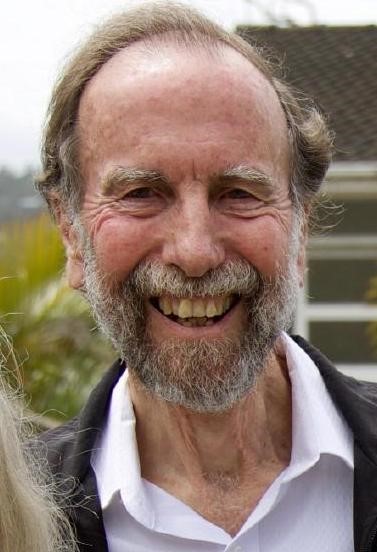 Richard W. Hunstead (Courtesy of the University of Sydney Archives)
Richard W. Hunstead (Courtesy of the University of Sydney Archives)
Richard W. Hunstead
Contributed by Anne Green
Richard (Dick) Waller Hunstead was born on 30 May 1943 and died on 30 January 2020, following a sudden illness, aged 76 years. He was born in Sydney and attended North Sydney Boys High School where he was an excellent scholar as well as being a gifted musician. His interest in music continued throughout his life, but his career was in science, specifically physics. For six decades he was part of the University of Sydney, arriving as a first-year student in 1960 and going on to become one of astronomy's most distinguished scientists with an influential legacy in many areas of astronomy - optical, radio and X-rays. Following BSc (Hons) and PhD degrees, he joined the staff at the University in 1972, rising to become Professor in 2003. He was one of the School of Physics most admired teachers and researchers.
Dick's interest in physics and astronomy led him to initiate a new approach to the teaching of experimental physics, particularly in the field of electronics, all while he was a part-time PhD student and a tutor in the laboratories. This passion for teaching and mentoring students continued all his career, and even when enormously busy leading major research projects, he found time to carefully update and coordinate student laboratory notes across all undergraduate years.
A quote from an Oral History taken in 2005 says it all: 'I don't place a lot on the research that I've done, although I've enjoyed it. It's all been great fun. I get the biggest buzz from working with students and seeing them develop into researchers through to their PhDs and beyond.'
This under-playing of the impact of his research, both astronomical and technical, typifies Dick's total lack of pretension. As a PhD student, his supervisor was the pioneer radio astronomer Bernard Mills, and Dick was part of the team building the Molonglo Cross radio telescope about 30 km east of Canberra, that produced exceptional maps of the sky at a frequency of 408 MHz. As well as helping with the actual construction, his principal task was to calibrate the positional accuracy of the instrument, which no one knew how to do. The solution was to cross-match the radio sources with their counterparts at visible wavelengths. Over many weeks, Dick observed the sky at 408 MHz and then set about measuring the positions of optical counterparts on Palomar Observatory plates using a plate-measuring machine that he helped design. His work was essential to the operation and international acceptance of the output from the telescope. When the Molonglo Cross was redeveloped as the Molonglo Observatory Synthesis Telescope, Dick was again at the forefront of the calibration strategy for position, flux density and optical identification.
In research, he gained an international reputation based on work over many decades and published in nearly 200 refereed papers, cited 7900 times. His discoveries include seminal work on quasars and radio galaxies, especially giant radio galaxies, and ground-breaking studies on quasar absorption lines at high spectral resolution. An early important discovery was that some radio sources varied on short time scales. This was disputed for some years. However, Dick was a careful and meticulous observer and through his persistence, this variability was eventually recognised as indicative of very small objects scintillating as the radiation passed through the intervening intergalactic medium. He also was very much involved with Molonglo observations of SN1987A. In the past few years, Dick had again undertaken research on radio transients and variables as a member of a project at Molonglo to search for Fast Radio Bursts. His fascination with astronomy was eclectic and broad-ranging, spanning areas from the supermassive black holes in distant galaxies to the impact of Shoemaker Levy comet as it crashed into the planet Jupiter in 1994.
The significance of his research was recognised with an ISI Web of Science Citation Laureate award for the impact of his publications in the period 1981 to 1998. He was the Robert Ellery Lecturer in 1995 and awarded the Harry Messel Award for Excellence in 2011. His influence and broad contribution to astronomy are recognised by the naming of a minor planet in his honour, 171429 Hunstead. As well as being an excellent collaborator and researcher, Dick was a wonderful supervisor. He was the supervisor and mentor of an extraordinary number of staff and Honours, PhD and undergraduate students. He was a gentle critic who used green pen as a corrector as he felt covering a script with red pen was too confronting.
Dick taught in lectures and laboratories at every level. His particular passion for experimental physics saw him make invaluable contributions to the design and constructions of numerous experiments, with outcomes that greatly enhanced the student experience. From 1998 to 2012, he was Coordinator for the Talented Student Program, an initiative that introduces top academic students to scientific research from their first year. He also held several leadership roles in the School of Physics, and was Director of the Molonglo Radio Observatory for more than a decade. Dick showed his passion and dedication to the field of Astronomy and the School of Physics with an extraordinarily generous gift, with his wife Penny, to support ongoing research and education activities in the University's Sydney Institute for Astronomy.
Dick will be remembered as an excellent researcher and teacher, but more importantly as a much-admired, generous, caring scientist who left an enduring legacy for generations of staff and students. He is sadly missed but will be long remembered.
![[IAU logo]](iau_wb_thumb.jpg)
![[URSI logo]](URSI-logo-thumb.jpg)
![[Karl Jansky at his antenna]](jansky_photo_02_thumb.jpg)
![[Reber's Wheaton antenna]](Reber_Telescope_Wheaton_thumb.jpg)
![[Dover Heights]](Dover_Heights_02_thumb.jpg)
![[4C telescope]](GB61-195_4C_telescope_thumb.jpg)
![[Ewen and horn antenna]](ewen_horn1s.jpg)
![[Dwingeloo, 1956]](Dwingeloo-1956-thumb.jpg)
![[Jocelyn Bell Burnell and Cambridge antenna used in pulsar discovery]](burnell2_thumb.jpg)
![[Lovell Telescope at Jodrell Bank]](site_1594_0001-500-334-20180316163019-thumb150.jpg)
![[Wilson, Penzias, and Bell Labs horn antenna]](wilson-penzias-horn_thumb.jpg)
![[6-m Millimeter Radio Telescope in Mitaka, Japan]](6m-thumb.jpg)

